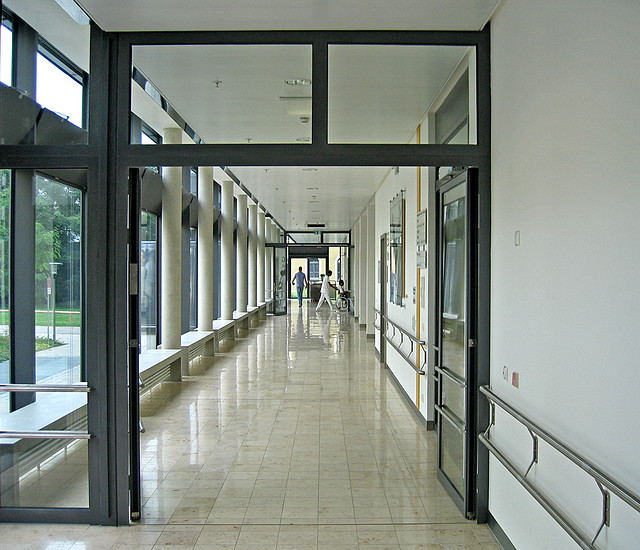Code Green Solutions


With their need for ventilation, heating, cooling, and lighting, 24 hours a day, every day of the year, it’s no wonder hospitals use more energy than any other major building type. What if you could configure a hospital, using passive and low-energy systems, and achieve significant energy savings while improving thermal comfort, environmental quality and resilience, and most importantly, not compromise safety and patient outcomes?
Hospital Configuration and Systems Integration for Reduced Energy Use, a report from Stantec and Cambridge University, makes recommendations to achieve these goals through the use of integrated systems for moderate climates (such as those in the Pacific Northwest and the south of the United Kingdom). Some of these systems include:
The paper explores options for designing a prototype acute care hospital – and the integration of building systems within it – to reduce the energy required for HVAC systems and lighting. The strategies put forward in the paper can be implemented within the existing regulatory framework and the authors claim they are adaptable in any hospital configuration (and with some modification could be applied in many cases to existing buildings as well). However, the authors focus on one strategy in particular: the use of a “thermal labyrinth” to take advantage of daytime temperature changes and provide “some low-grade pre-heating in winter and pre-cooling in summer.”
The thermal labyrinth-prototype would consist of a series of high-volume water tanks. That water is then naturally circulated through a series of aluminium tube heat exchangers or radiators in the labyrinth in order to exchange heat with the air. Whilst cooling the labyrinth during night in summer and heating it during day in winter, labyrinth and rooms are ventilated separately. Models of the system were found to reduce heating and cooling loads by 10% to 20%. Additional reductions towards cooling and heating load are ensured by implementing heat recovery technology and automatic solar shading.
Reduced heating and cooling load allows using displacement ventilation. Some energy can be saved and costs can be reduced with effective supply air opening and vertical air distribution. Vertical air distribution allows further savings in terms of wall costs and electricity supply – thinner walls and lower floor heights allow larger courtyards to bring natural daylight into the rooms.